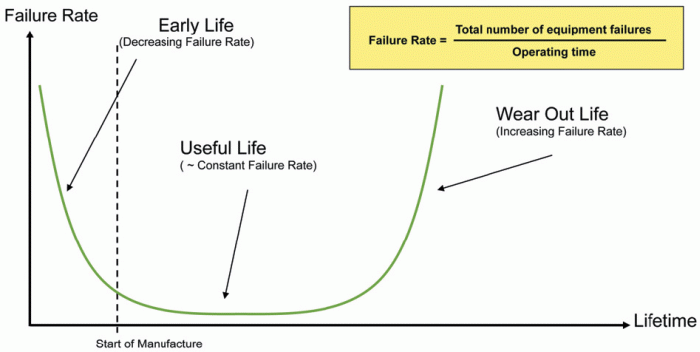 Paul Hickman of Bosch Rexroth explains how to achieve reliable operation of automation equipment that is nearing the end of its life
Paul Hickman of Bosch Rexroth explains how to achieve reliable operation of automation equipment that is nearing the end of its life
The product life cycle of automation equipment can be broken down into three distinct phases – early life phase, useful life phase and wear out phase – each requiring different support strategies. However, to extend the overall length of equipment operation, it is possible to ‘push’ equipment that is in the wear out phase back into the useful life phase.
In the useful life phase the unit, be it a drive, motor, control equipment or HMI screen for example, is in standard production and spares are freely available. During this phase operators can expect a fairly low but constant failure rate and a high level of machine availability.
The useful life phase is characterised by lower production costs, due to reduced machine failures. When supported with planned maintenance schedules, no unexpected costs are incurred and spares usage can be accurately calculated, maintained and budgeted for. Manufacturers need only carry the spares they need, which in turn reduces inventory costs.
Wear and tear
Under normal circumstances the wear out phase for a product will begin around eight to ten years after launch. Drives and motors, for example, will go into the service phase ten years after launch while HMIs will go into service within five years.
Once the wear out phase has commenced it can be expected that failure rates will increase, thus leading to increased down-time and production costs, plus a rise in the cost and usage of spares. Repairing equipment becomes increasingly risky and less cost effective (see figure 1).
 This increased risk derives from the repair of failed individual components within a unit. These failed components will have similar operational hours to other components within the same unit so it is likely that another component will subsequently fail, leading to continuous repair of ‘multiple repeat’ failures of that unit. This ultimately results in higher operational costs.
This increased risk derives from the repair of failed individual components within a unit. These failed components will have similar operational hours to other components within the same unit so it is likely that another component will subsequently fail, leading to continuous repair of ‘multiple repeat’ failures of that unit. This ultimately results in higher operational costs.
During the wear out phase, end users are faced with the possibility of significant capital investment to return production machines to their previous levels of availability. One major end user for example was recently facing a capital cost of circa £20m for the replacement of more than 1,500 drives, motors, HMI controls and power supply equipment in one plant.
Faced with this sort of capital investment, many end users of automation equipment are turning to an alternative solution for ageing equipment nearing the end of its serviceable life – namely remanufacture.
Remanufacture
Remanufacture can effectively extend the useful life of a product. Critically, this option involves the easy exchange of the unit with machine wiring with software systems unaffected. For the user, this means lower risk with no system disturbance.
What’s more, the ‘Reman’ programme offered by Bosch Rexroth can offer fast exchange time with the process being carried out by the end user during planned shutdown which means no loss of production. Large scale unit exchange can be planned and staggered to meet customer schedules. For example, a bank of four to five drives can be exchanged in an hour.
Reman also involves the stripdown and cleaning of units, with wearable parts being replaced with original Rexroth specified components. Units are updated to the latest levels to achieve optimum performance and reliability characteristic. Once this process is completed, a functional operation test is carried out in accordance with company quality procedures. An extended warranty of two years is offered on all remanufactured parts which can be increased to five years if required, subject to conditions.
For the end user the benefits can include no re-engineering costs, due to like for like product replacement and no re-training of operators to use or maintain new equipment. What’s more, manufacturing costs should be reduced and equipment up-time improved, with no increase in spares, which should put a ceiling on capital expenditure.
Summary
A further option is called Reman +5 which offers end users a further five years through the unit’s service life. This option not only extends the product lifetime, but also guarantees component parts.
However, an optimum point exists where Reman is possible (see figure 2). Beyond this point, typically when spares products are no longer available, retro-fit is the only answer.
The key issue for end users is of course cost. Whilst investing in new product may offer a cheaper option from a unit cost view, it is important to take into account associated costs. New products will often mean a re-engineered solution, new wiring, production down-time, replacement of all spares and re-training, with the added risks associated with the debugging of new software.
Reman on the other hand takes out a unit and installs a like for like replacement with all cabling and software being the same, ultimately offering a quicker more effective solution.

